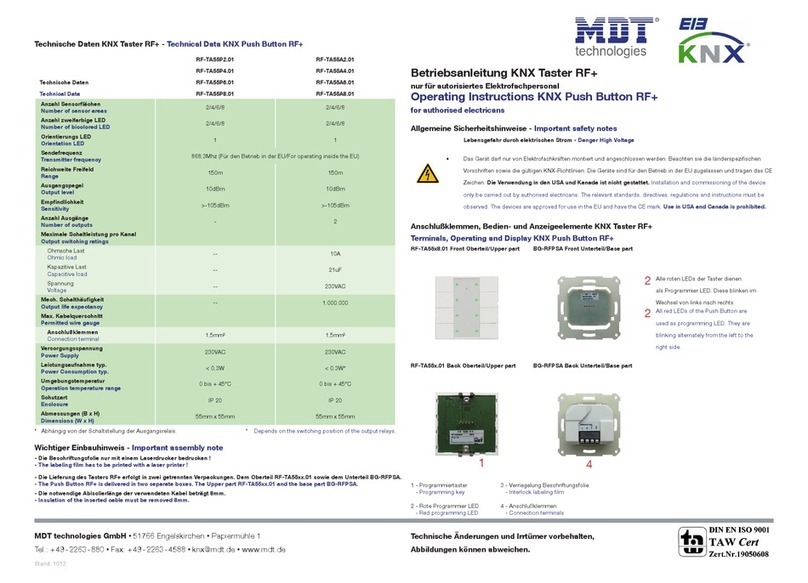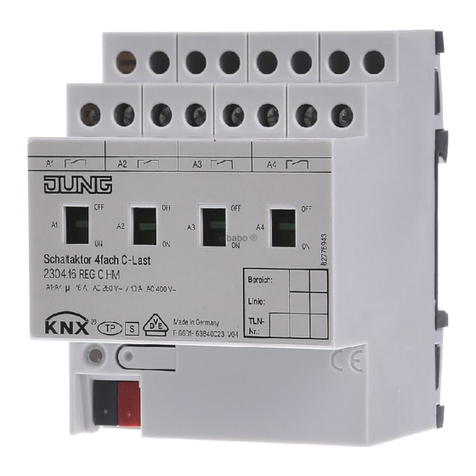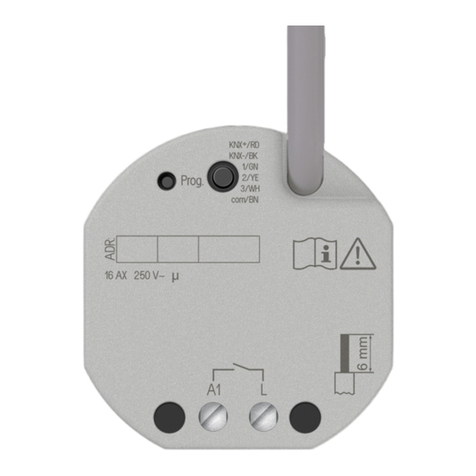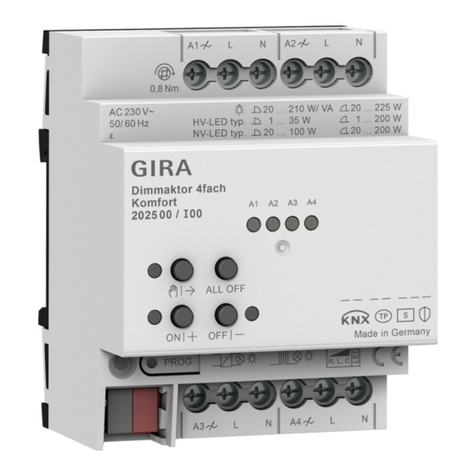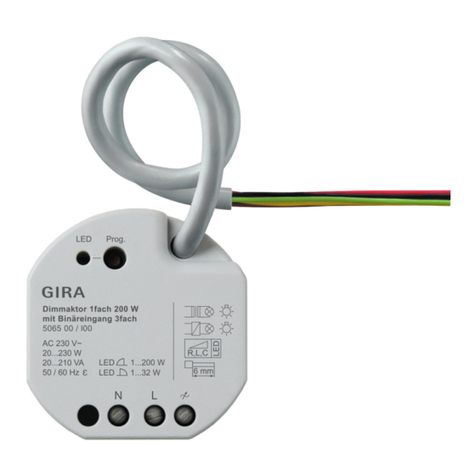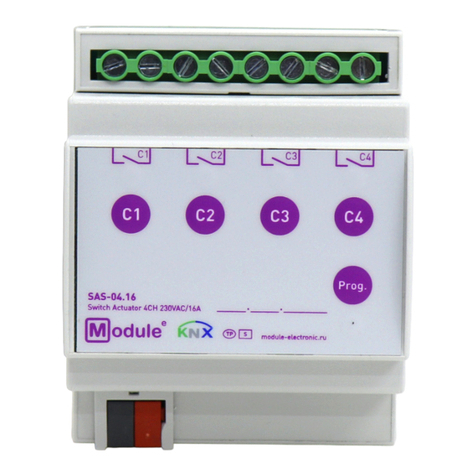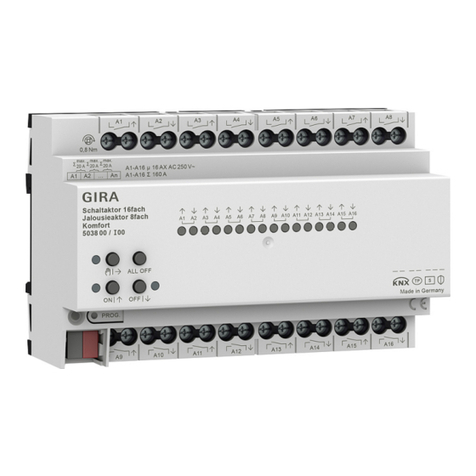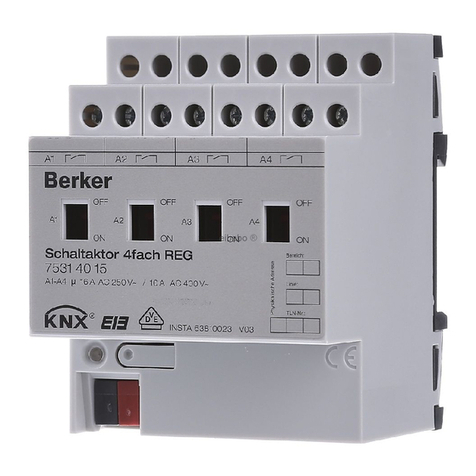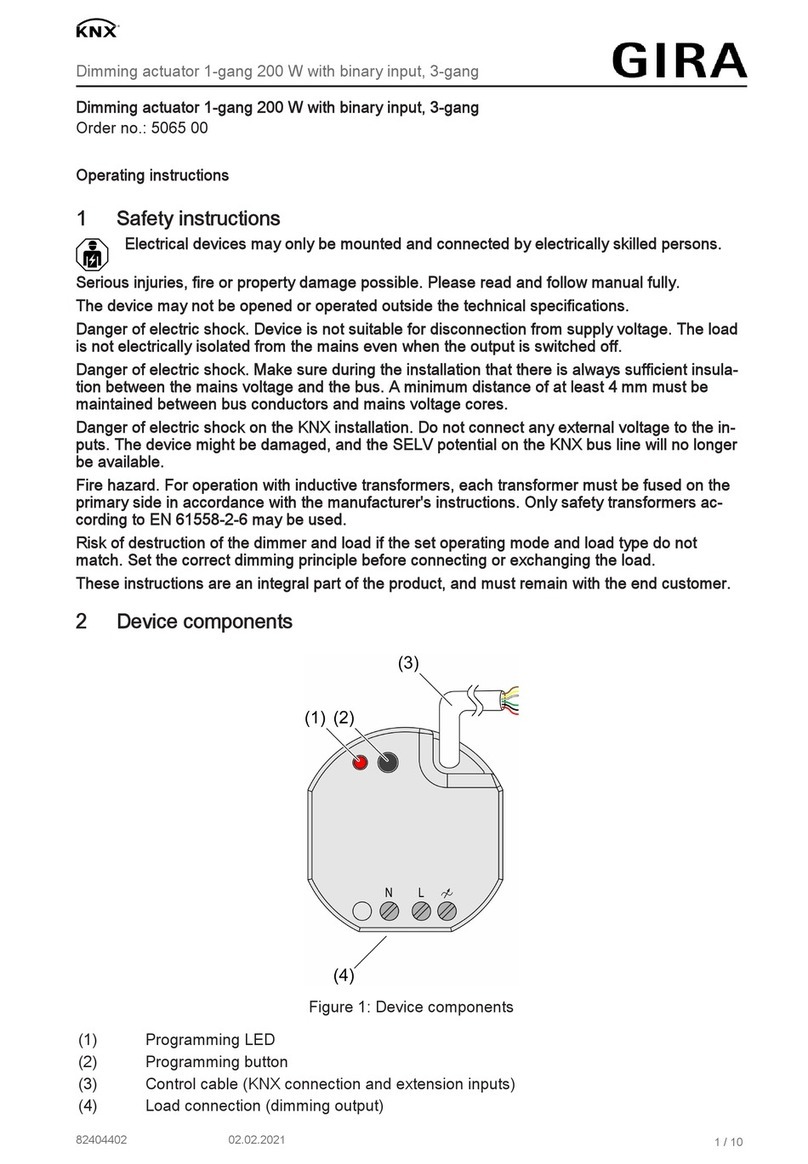
Dimming actuator, 4-gang
The function of this device depends upon the software. Detailed information on loadable soft-
ware and attainable functionality as well as the software itself can be obtained from the manu-
facturer´s product database.
The device can be updated. Firmware can be easily updated with the Gira ETS Service App
(additional software).
The device is KNX Data Secure capable. KNX Data Secure offers protection against manipula-
tion in building automation and can be configured in the ETS project. Detailed specialist know-
ledge is required. A device certificate, which is attached to the device, is required for safe com-
missioning. During mounting, the certificate must be removed from the device and stored se-
curely.
Planning, installation and commissioning of the device are carried out with the aid of the ETS,
version 5.7.3 and above.
Intended use
– Switching and dimming of
incandescent lamps,
HV halogen lamps,
dimmable HV-LED lamps,
dimmable compact fluorescent lamps,
dimmable inductive transformers with LV halogen or LV LED lamps,
dimmable electronic transformers with LV halogen or LV LED lamps
– Operating in KNX systems
– Mounting on DIN rail according to EN 60715 in sub-distribution unit
If inductive or electronic transformers are connected, observe the data of the transformer
manufacturer on loads and the dimming principle.
HV-LED and compact fluorescent lamps generate high pulsed currents, when they are
operated in the leading edge phase control.
Our dimmers take into account the different electronic characteristics of most LED lamps
found on the market. However, it cannot be guaranteed that in individual cases the de-
sired results may not be achieved.
Product characteristics
– Outputs can be operated manually, construction site mode
– Feedback in manual mode and in bus mode
– Disabling of individual outputs via bus
– Status feedback
– KNX Data Secure compatible
– Updateable with ETS Service App
Only for "Comfort" version:
– Disabling of individual outputs manually or by bus
Dimming operation characteristics
– Automatic or manual selection of the dimming principle suitable for the load
– Protected against no-load, short-circuit and overheating
– Feedback of the switching position and the dimming value
– Parameterisable switch-on and dimming behaviour
– Time functions: switch-on delay, switch-off delay, staircase lighting timer with run-on time
– Light scene operation
– Status indicator of the outputs via LED
– Mains failure longer than approx. 5 seconds leads to switch-off of the dimming actuator.
Depending on the parameter setting, the connected load is calibrated after resumption of
power supply.
– Power extension possible by means of power boosters.
2 / 11
82402712 10.07.2020
